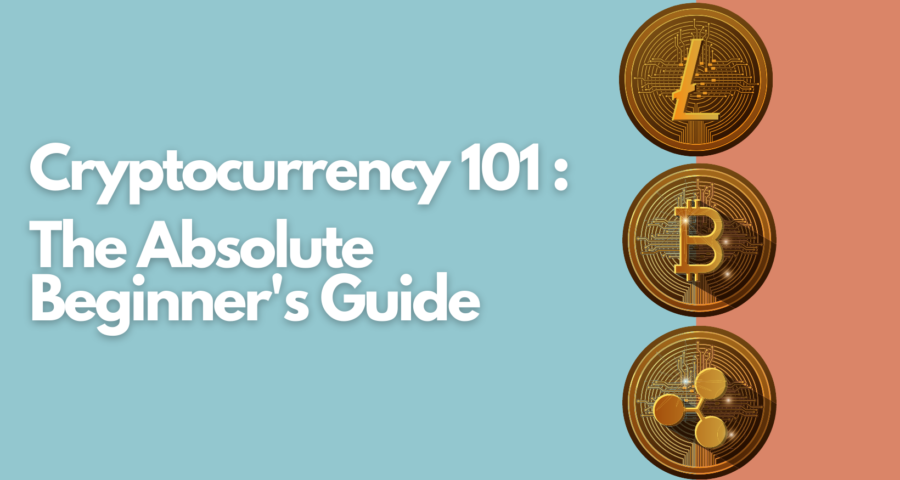What’s cryptocurrency:
Well, first, to clear some doubts, a cryptocurrency is its own currency. It is not a way to transfer Dollars or any other currency.
Second, it’s decentralised as there is no single authority in control of it.
Basically, it’s a digital asset. You can use it to pay for stuff, and the records of your payment would be stored in a decentralised ledger, a computer database secured using strong cryptography. This same cryptography verifies the transfer of coins and controls the creation of additional coins.
This is how it works:
Because there is no physical coin involved, crypto exists as a pure digital entity. It is currently primarily considered to be a speculative asset. This is due to the fact that the use of crypto as a full fledged currency or as a store of value seems inevitable.
However, cryptocurrency, unlike gold, is not a tangible asset (no one has ever touched a Bitcoin because it only exists digitally).
A transaction is in effect a piece of information broadcast into the cryptocurrency network, of who sent how much to whom. This is then verified by individual pieces of the network.
The users of crypto are only identified by their wallets – their individual accounts. Therefore, all transactions can only be between wallet addresses.
As all these transactions are compiled into the blockchain, which is the public ledger mentioned before, anyone can verify these transactions.
It is this verification, in which an individual’s computer – a “node” – is used, that is known as mining.
A crypto miner donates their computing power to work on verifying a bundle of transactions. They look for a way to make it easy to verify a transaction and make it difficult to fake one. This is called “proof of work”.
When a user displays this “proof of work”, they get coins for letting the network use their computer to verify transactions.
This is the way that new crypto is added into circulation.
You might have to read the above explanation multiple times. That’s okay. Technobabble is typically hard to parse.
A brief history of Bitcoin:
The first cryptocurrency was Bitcoin.
And we don’t actually know who created it.
The original Bitcoin whitepaper was apparently written by one Satoshi Nakamoto. However, this is most likely a pseudonym, and could possibly refer to multiple researchers.
The Bitcoin network was created on 3rd January 2009, when the genesis block – or the starting block – of the blockchain was mined.
Embedded in this block was the text “The Times 03/Jan/2009 Chancellor on brink of second bailout for banks”. This is a headline published by The Times.
It can be considered as a timestamp, or more like a mockery on the instability caused by traditional banking systems.
After mining about a million bitcoins, Nakamoto disappeared in 2010.
He (or they) handed the network alert key and control of the code repository over to Gavin Andresen, who then sought to decentralise control.
How many cryptocurrencies exist:
Well, there are more than 2,500 cryptocurrencies in existence.
To make things easier, let’s just go over the most popular ones.
- Bitcoin
- Litecoin
- Ethereum
Bitcoin (BTC) is often referred to as “digital gold”, or the gold standard for digital currency. It is the world’s most popular cryptocurrency. It currently has a market cap of over $642 billion and one Bitcoin costs about $34,323.
Litecoin (LTC), is a fork from Bitcoin. It’s a way to make the Bitcoin algorithm quicker and cheaper, by block mining every 2.5 minutes, which is 4 times faster than Bitcoin. It’s designed to have a lower transaction volume than Bitcoin so that people can observe the effects of a virtual currency without having to support an actual economy.
Ethereum works a lot like Bitcoin but has more features, such as the ability to power smart contracts and decentralised applications or dApps. It’s a platform for “initial coin offerings” – here, you can start your own cryptocurrency, and is one of the main platforms for the NFT – “Non-Fungible Token” – craze.
Why cryptocurrency is getting so popular:
Besides making people feel like they are on the cutting edge of things, crypto is popular for several reasons –
- Its speculative value is rather high. The exchange rate of Bitcoin hit $50,000 per Bitcoin in early 2021.
- There are no middlemen like banks or credit card companies taking a cut of the transactions.
- As crypto is decentralised, there is no single entity that can knock over the system.
- It is truly global, as anyone can mine, earn and transact in Bitcoin. This means there are no problems of foreign exchange.
- Fiat currencies must deal with monetary policies. This means that any crisis associated with one currency, will be followed by depreciation in the currencies pegged to it. This can be avoided by using crypto.
- It is shielded from bank failures, collapses, absconding, and unfavourable policies.
In the end:
It’s your opinion that matters.
You might think that crypto is just a fad, or you might think that it is the currency of the future.
Regardless, without knowledge of what it is, you’ll be the one discomfited.
And if you think about the evolution of currency, you might be more positively inclined towards accepting cryptocurrency.


Leave a Reply